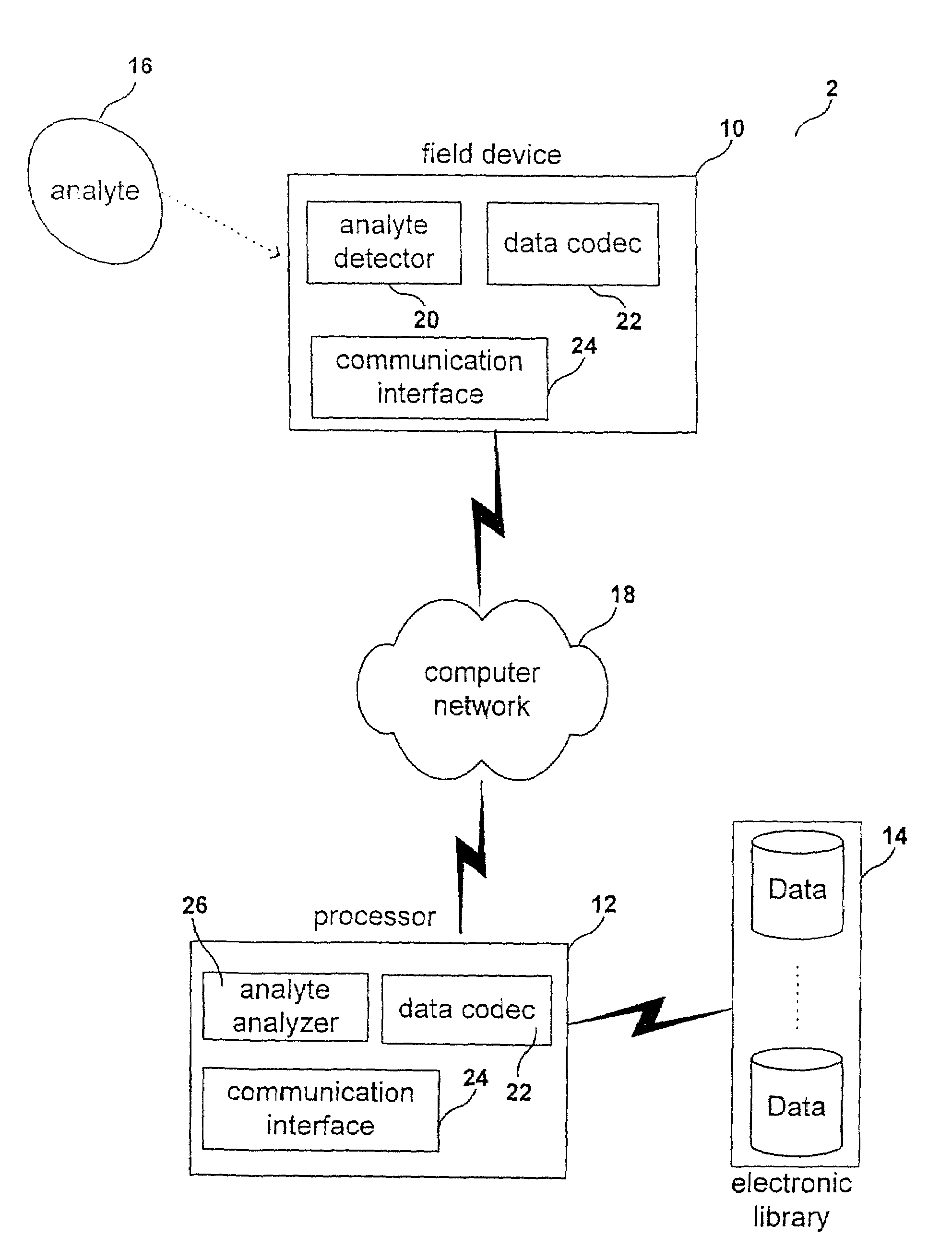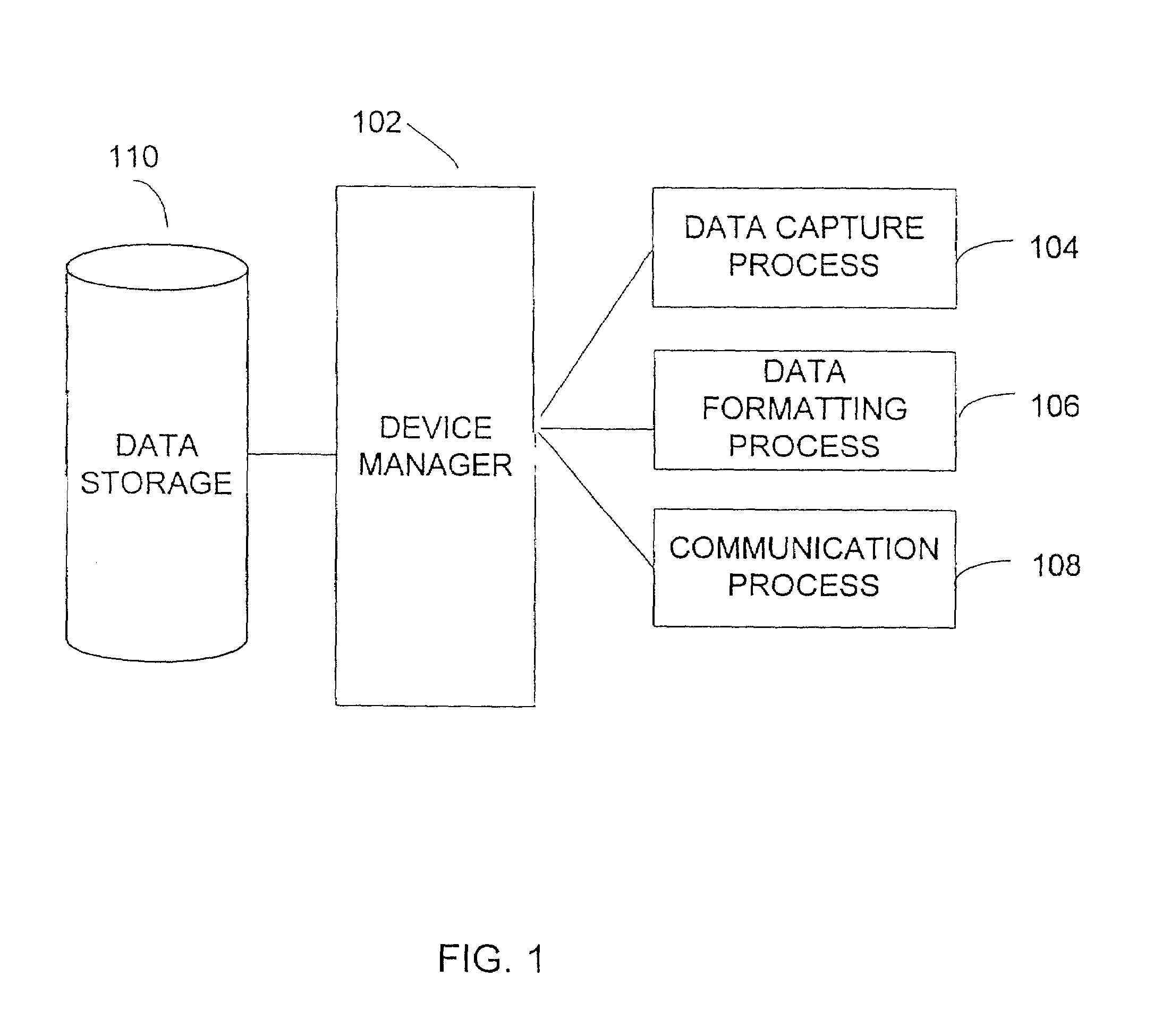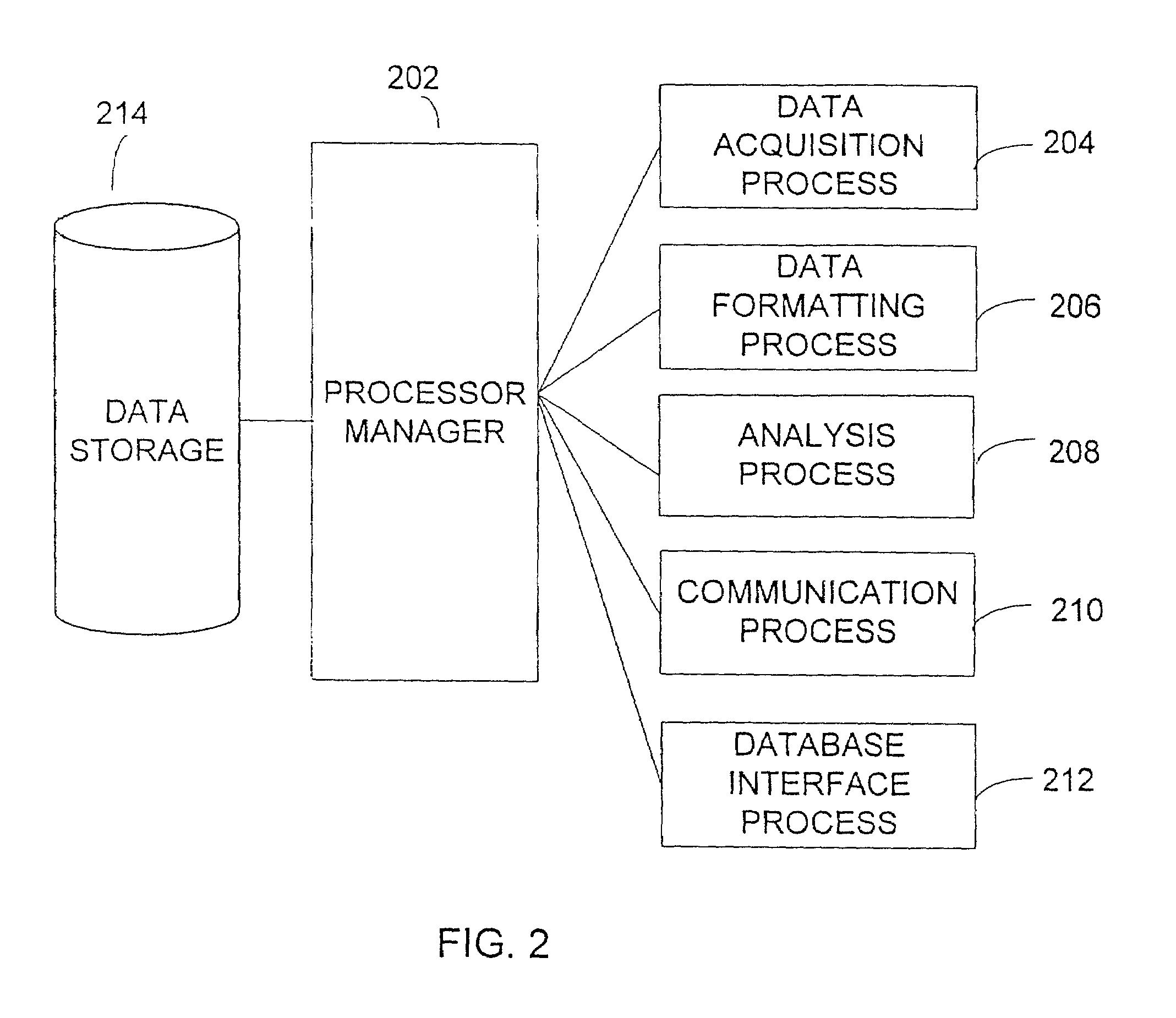System for portable sensing
a portable sensing and sensor technology, applied in the field of detection and transmission of sensory data, can solve the problems of not being able to perform data, not being able to predict an impending disaster, not being able to provide results for hours, days or even weeks, etc., to achieve easy implementation, expand the repository of knowledge, and be convenient to share.
- Summary
- Abstract
- Description
- Claims
- Application Information
AI Technical Summary
Benefits of technology
Problems solved by technology
Method used
Image
Examples
Embodiment Construction
[0025]FIGS. 1 and 2 are simplified diagrams of modules 100 in a system for detecting and transmitting analyte data according to an exemplary embodiment of the present invention. These diagrams are merely an example which should not limit the scope of the claims herein. One of ordinary skill in the art would recognize many other variations, modifications, and alternatives. The system preferably includes a device manager 102 and a processor manager 202.
[0026]As shown in FIG. 1, the modules 104–108 include a variety of processes, which couple to the device manager 102. The processes include a data capture process 104, a data formatting process 106 and an I / O process 108. Other processes can be included. The device manager 102 also couples to data storage device 110 and oversees the processes. These processes can be implemented in software, hardware, firmware, or any combination of these in any one of the hardware devices, which will be described below, as well as others.
[0027]The data ...
PUM
| Property | Measurement | Unit |
|---|---|---|
| transmission | aaaaa | aaaaa |
| electrical response | aaaaa | aaaaa |
| time | aaaaa | aaaaa |
Abstract
Description
Claims
Application Information
 Login to View More
Login to View More - R&D
- Intellectual Property
- Life Sciences
- Materials
- Tech Scout
- Unparalleled Data Quality
- Higher Quality Content
- 60% Fewer Hallucinations
Browse by: Latest US Patents, China's latest patents, Technical Efficacy Thesaurus, Application Domain, Technology Topic, Popular Technical Reports.
© 2025 PatSnap. All rights reserved.Legal|Privacy policy|Modern Slavery Act Transparency Statement|Sitemap|About US| Contact US: help@patsnap.com



